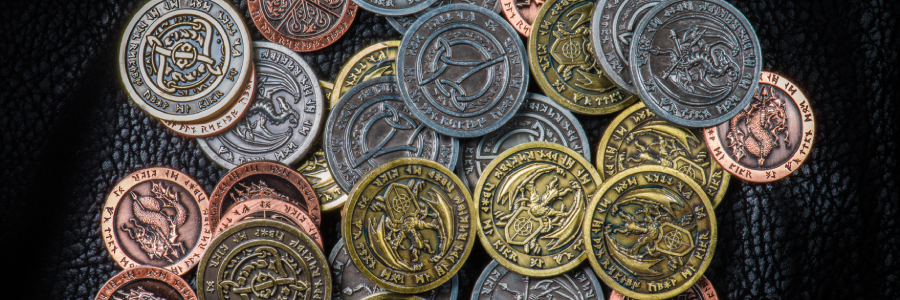When it comes to tokens and coins, it is not surprising that these terms are confusing to anybody new to blockchain technology. While the terminology seems to have a similar meaning, the two words actually describe totally different things. Knowing the difference is essential to understand how blockchain-applied technology works.
Coin: Bearer of value
Transactions of digital coins can be made from one person to another. However, no physical coins will move when you send or receive a transaction. All the “coins” exist as data on a giant global database. This database (or blockchain) keeps track of all the transactions and is checked and verified by computers around the world.
To understand how digital coins can be used is easy. Just like any other currency. Digital coins like Bitcoin, Litecoin and Monero are in fact comparable to the coins in your wallet or piggy bank. In most cases, they do not serve any other purpose than being used like money.
As with any other currency, it is possible to send value from one person to another by transferring the ownership of a coin. Coins can also be stored in a wallet for a long time and swapped for something useful at a later stage. Their inherent value can be used to price goods and services. In other words you can use coins as a unit to measure value.
Apart from these financial uses, there is no alternative to coins. They cannot be stacked to earn more coins and they cannot be used to operate a certain application. They are used only as money and that is it.
Use of coins
However, there are some coins which offer more features than just being useful as a form of money. The most popular currencies with a different or additional function are Ether, NEO and DASH.
In the Ethereum network, the “coins” are called Ether. Tokens can be built on Ethereum, but Ether is still required when sending a token. Ether funds the mining costs by paying the miners that verify transactions on the Ethereum network. It is the fuel that powers transactions.
Tokens can be built on NEO, just like on Ethereum. When sending a token on the NEO network, a user has to pay GAS as a transaction fee, the same way that Ether is used to pay Ethereum fees. To earn GAS a user has to stack NEO in a wallet to earn a dividend. This dividend is known as GAS.
With the help of coins, it is also possible to support opinion formations. Users of the Dash-network can vote on important decisions by holding a sufficient amount of Dash. If there is a plan suggested to upgrade the network, those holding enough Dash can vote to decide whether or not the upgrade should happen. These voting rights allow the holders of DASH to participate in the evolution of the network. Besides that, coins can fulfill many different purposes in industrial processes.
Token: Bearer of information
Even if many people often describe tokens as digital coins, this is not correct. There is a huge difference. According to William Mougayar, author of ‘The business blockchain’, a token is “a unit of value that an organization creates to self-govern its business model, and empower its users to interact with its products while facilitating the distribution and sharing of rewards and benefits to all of its stakeholders.”
While it is as good as impossible to create a new coin on an existing blockchain, anyone can make their own customized token. In fact, because of the creation and facilitation of smart contracts, the most common blockchain platform used to create tokens is Ethereum. Nevertheless, it is possible to create customized tokens on any blockchain. If you want to learn even more about tokens and what they do, you can do so here.
